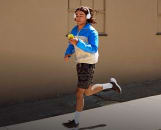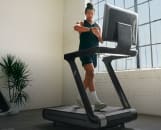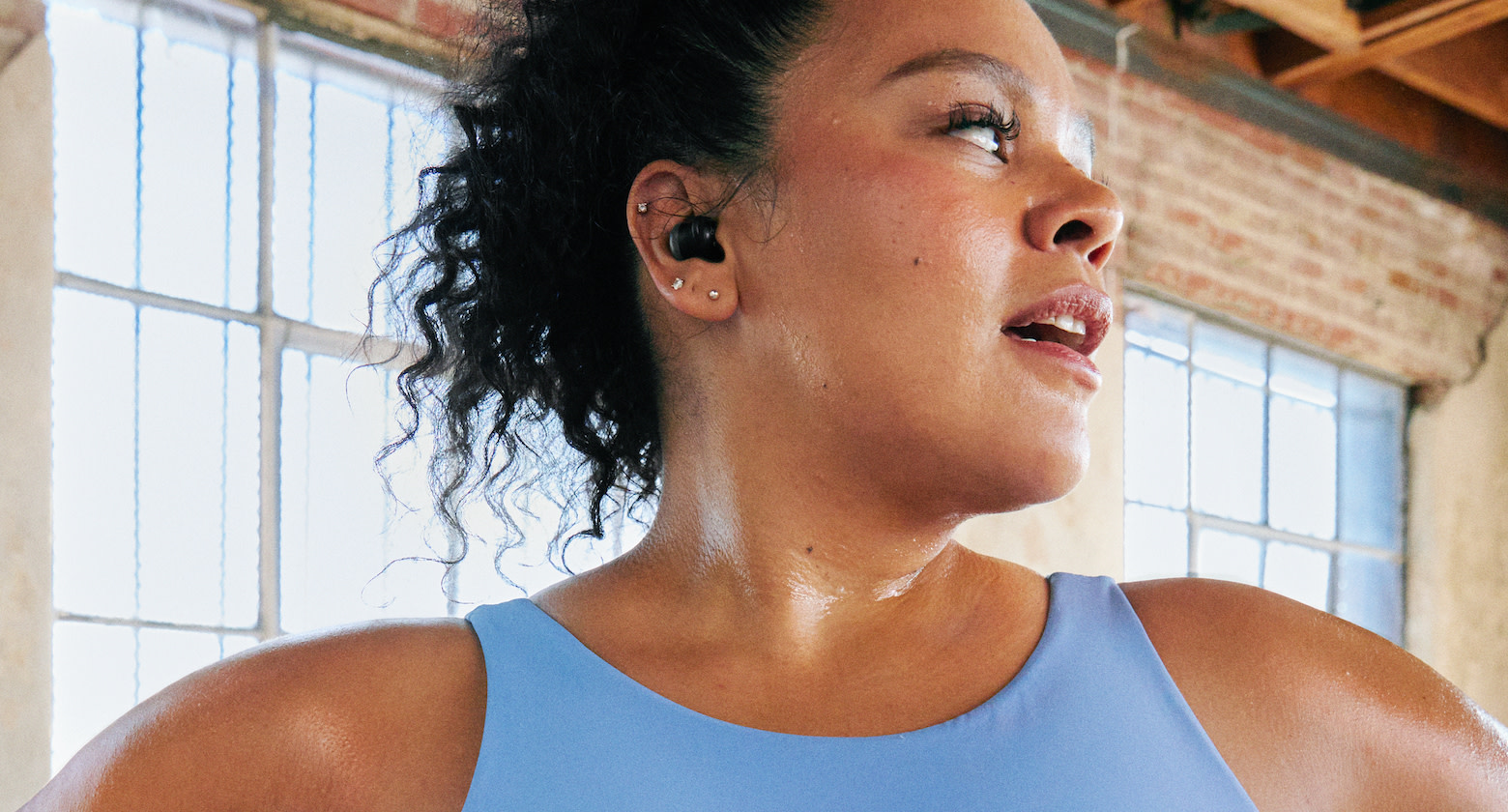
aquaArts studio / E+ via Getty Images
9 Easy Tips for Staying Hydrated All Day Long (Besides Just Chugging Water)
Drinking H2O when you’re thirsty is just the start.
By Kathleen Felton•
How Much Water Do You Need to Stay Hydrated?
9 Tips to Stay Hydrated
Should You Just Hydrate with Water?
The Takeaway
It’s all too easy to fall a little behind on your water intake, especially during the summer and anytime you’re exercising outside on hot, humid days. But staying hydrated is crucial—not only to keep your energy up during endurance activities, but also to prevent dehydration and minimize your risk of serious heat-related illnesses such as heat exhaustion.
And while it’s absolutely important to hydrate during your workout itself, the best way to maintain healthy hydration levels is by keeping water intake top of mind, well, all the time. “We need to consciously drink water throughout the day to meet our fluid needs,” says Gabbi Berkow, RD, an exercise physiologist and registered dietitian certified in sports dietetics based in New York. “Drinking only when you feel thirsty isn’t enough.”
Read on for expert strategies on how to stay hydrated, even on the hottest days of the year.

Olga Rolenko / Moment via Getty Images
How Much Water Do You Need to Stay Hydrated?
The official guidelines from the US National Academies of Sciences, Engineering, and Medicine recommend aiming for between 11.5 and 15.5 cups of liquid per day from both beverages and foods, or roughly 3–4 liters. “But if you exercise more and sweat more, you need more water than that,” Berkow says.
The right amount of water for you each day can vary depending on other factors too, including your environment (exercising outside on a hot day will cause you to sweat more, which means more water to replenish), whether or not you take any medications or supplements, whether you’re pregnant or breastfeeding, as well as your age. “Water needs increase with age because our thirst mechanism—the trigger in our brain that tells us we’re thirsty and leads us to drink—decreases as we get older,” Berkow notes.
Bottom line? The recommended 11.5 to 15.5 cups a day is a good starting goal, but you should plan to increase your H2O intake if you’re going to be working out, as well as if you’ll be sweating more than usual. Your urine color can serve as a rough hydration monitor: If it’s pale yellow, you’re on target; if it’s darker, sip up. And you’re still not sure your hydration is on track, your doctor or a registered dietitian can help guide you.
9 Tips to Stay Hydrated
It can be all too easy to fall behind on hydration, especially when you’re sweating more than usual during workouts or during extra-hot weather. Fortunately, these helpful tips can help keep you stay hydrated:
1. Drink a Full Glass of Water As Soon As You Wake Up
Many of us open our eyes and immediately think about that morning cup of coffee. But one of the best ways to set yourself up for all-day hydration—especially if you know you’ll be exercising later—is to start off with water, Berkow says. “We wake up dehydrated after sleeping,” she notes, and drinking a full glass right away can help replenish lost fluids. For a visual reminder you can’t ignore, keep a glass on your nightstand.
2. Plan to Sip Throughout the Day
“Hydration doesn’t just become important within two hours before, during, or after activity,” says Kelly Jones, RD, a sports dietitian who works with professional athletes and active families. But some people find it a little overwhelming to think of their daily hydration goal in terms of ounces.
While there will definitely be times when you may want to consider exactly how much H2O you’re drinking—when rehydrating after your workout, for example, or if you think you might be dehydrated—you might find it easier to just focus on sipping at regular intervals throughout the day. A good goal? Take a drink every 30–60 minutes, as well as before every meal or snack, Berkow says.
3. Eat Water-Rich Fruits and Veggies
All that water is crucial, of course, but what you eat also helps support hydration—in fact, about 20 percent of your daily fluids should come from food. “There are many hydrating foods that contribute to fluid intake,” Jones says.
The obvious picks are juicy fruits like watermelon, tomatoes, and berries, but a surprising number of veggies have a high water content, too, including iceberg lettuce (96 percent water), radishes (95 percent), and mushrooms and asparagus (both are 92 percent water). So if you’re planning to exercise outside on a hot day or have a particularly vigorous workout planned, choosing some of these high-water picks before and after your workout can help keep fluid levels high.
4. Make a Morning Smoothie
Speaking of water-rich foods, one of the best vehicles for them is a smoothie, Berkow says. “They’re a great and refreshing way to help meet fluid needs, especially in high summer heat.”
She recommends blending up a serving of fruit, a handful of greens (spinach also contains 92 percent water, while celery packs a whopping 95 percent), some protein (Berkow suggests aiming for at least 30 grams, such as from Greek yogurt), 1–2 cups of dairy or nondairy milk, plus 1 tablespoon of nut butter or seeds for a healthy fat boost.

Viktoriya Skorikova / Moment via Getty Images
5. Invest In a Water Bottle You Love
“Always carry a water bottle with you,” Berkow recommends. Not only does a reusable bottle make it easier to hydrate during workouts, but having one on hand throughout the day can help you consistently sip more water and keep track of your overall hydration. To make the math easy, Berkow recommends choosing one that’s roughly equivalent to your minimum daily water needs (for example, a 3- or 4-liter bottle) and doing your best to finish it each day. Another option: Buy a 1-liter bottle and remind yourself to refill it three or four times a day.
6. Remember Other Drinks Count Toward Your Fluid Goals Too
Water is always number one (more on this below), but you don’t need to exclusively sip plain H2O all day if you’re craving a little more variety. “Sparkling mineral water and naturally flavored seltzers also contribute to your fluid intake,” Jones says. Same goes for beverages like milk, nondairy milk alternatives, and even juice in moderate amounts, she adds.
7. Caffeine Drinks Are OK—Just Don’t Overdo It
While a cup of coffee isn’t the best hydration choice (again, water for the win!), it doesn’t necessarily have to detract from your daily hydration goals. “What comes as a surprise to many is that coffee and caffeinated tea in moderation also count toward your fluid needs,” Jones says. You’ll just want to be careful not to overdo it, as too much caffeine can lead to dehydration—for most people, it’s usually best to stick to two cups per day of coffee, she says.
8. Add a Little Salt
You know that eating salty foods like chips, pretzels, or popcorn can quickly make you super thirsty. But the relationship between sodium and hydration is more important than you might think. “Sodium plays a huge role in hydration status, so adding salt to home-cooked meals, especially prior to activity, can help to maintain fluid balance,” Jones says. Before you exercise, the American College of Sports Medicine recommends having a pre-workout snack that contains some sodium to help prompt your body to drink more water and “prehydrate.”
For a quick and easy option, Jones suggests a slide of watermelon with salt sprinkled on top. “This will further stimulate your thirst to help reduce losses during exercise,” she says.
9. Eat Electrolyte Foods All the Time
Electrolytes—electronically charged minerals such as sodium, bicarbonate, magnesium, and potassium, among others—play an important role in a number of your body’s processes, and in particular, they help to regulate hydration. That’s why sports drinks and powders contain electrolytes; they help replenish the minerals you lose through sweat.
Sports drinks aren’t harmful, though they can contain quite a bit of sugar, Jones notes. But most of us don’t need to be drinking them after every workout. A better option, she says, is to focus on eating whole foods that contain electrolytes all the time. “It’s helpful for them to be ingested and available every time you eat,” she says. Good sources include leafy greens, beans, fatty fish like salmon, bone broth, and even dark chocolate.
Should You Just Hydrate with Water?
As long as you’re eating regular meals to replace all the salt your body has lost through sweat, water is usually all you need to rehydrate after spending time outside on a hot day, according to the Centers for Disease Control and Prevention (CDC). But if you’ve been sweating outside for a couple hours or just finished a particularly tough workout, sports drinks with electrolytes can be another good option.
“Although sports drinks are not necessary during short spurts of activity, they can be great during aerobic activity lasting longer than 75 minutes,” Jones says. “This is the time when your fluid losses are reaching their peak, and the body needs increased fluid replenishment.” Just remember that these drinks typically contain sugar along with electrolytes—so they shouldn’t replace H2O as your primary hydration source.
As for post-workout beverages to avoid? Energy drinks aren’t the best choice, the CDC says. Not only do these drinks contain tons of sugar, but they also often have higher caffeine levels than a typical serving of coffee or tea. On a really hot day, very high levels of caffeine can put extra strain on your heart—which is already working overtime to keep your core temperature down.
And—this will probably come as no surprise—it’s safest to skip alcohol as you’re recovering from a serious outdoor sweat session, since booze can be dehydrating. “Alcohol doesn’t count towards your daily fluid needs, and you need to drink more water if you drink [it],” Berkow says.
The Takeaway
The official guidelines are to aim for somewhere between 3 and 4 liters of water a day, but it’s important to up your H2O intake if you’ll be exercising or sweating more than usual—after all, the more water you lose through sweat, the more you’ll need to drink to rehydrate yourself. Plain-old water is always your best bet, but if you like a little variety, there are other ways to boost your hydration, too, such as by eating lots of water-rich foods and sipping on hydrating drinks like sparkling water or a nutrient-packed smoothie. And speaking of food: Adding salt to your home-cooked meals can actually support overall hydration, as can making sure to regularly eat foods that contain electrolytes (these electronically-charged minerals don’t only appear in sports drinks!).

Peloton App
Access thousands of classes with no equipment needed.
This content is for informational and educational purposes only and does not constitute individualized advice. It is not intended to replace professional medical evaluation, diagnosis, or treatment. Seek the advice of your physician for questions you may have regarding your health or a medical condition. If you are having a medical emergency, call your physician or 911 immediately.
This content is for informational and educational purposes only and does not constitute individualized advice. It is not intended to replace professional medical evaluation, diagnosis, or treatment. Seek the advice of your physician for questions you may have regarding your health or a medical condition. If you are having a medical emergency, call your physician or 911 immediately.
Get our latest health stories straight to your inbox
Enter your email to get articles, expert-backed tips, and updates from Peloton sent to your inbox.
By providing your email address, you agree to receive marketing communications from Peloton.
For more about how we use your information, see our Privacy Policy.







